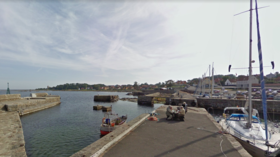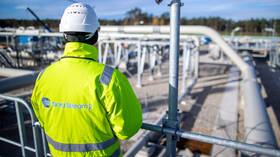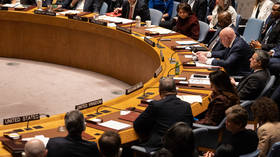Nord Stream blasts damaged Baltic wildlife – scientists

The destruction of Nord Stream 1 and 2 pipelines did not just cut off the flow of Russian natural gas to western Europe, it killed and poisoned fish and marine mammal species already considered endangered in the Baltic Sea, according to a new report from Danish, Polish and German scientists.
Two pipes of Nord Stream 1 and one pipe of Nord Stream 2 were blown up in late September 2022, in what Moscow has called an act of international terrorism. The “four explosions” stirred up the surrounding seabed, including an area previously used to dump toxic waste, according to a study conducted by the Aarhus University in Denmark.
“This could mean that fish that have been exposed to substances [such as lead and TBT] will become ill. There are some of them who will die, and there are some of them who will have difficulty reproducing,” Hans Sanderson from the Department of Environmental Science at Aarhus told the Copenhagen Post on Monday.
The researchers estimated that a quarter million tons of contaminated seabed, an area “twice the size” of the island of Bornholm, may have been stirred up by the explosions. This has threatened the Baltic Sea cod and porpoise populations, which have breeding grounds nearby.
Explosions may have deafened all porpoises within 50 kilometers of the blasts, while those within 4 kilometers were “probably killed,” the researchers said.
“It really was in the worst imaginable place. It is a tragedy that this has happened right here, where nature is already completely on its knees,” Bo Oksnebjerg of the World Wide Fund for Nature (WWF) told the Post. He urged the Danish and Swedish governments to come up with a “sea plan” to safeguard the Baltic from future incidents.
Denmark’s Environment Minister Magnus Heunicke promised that the government would “continuously monitor and share the information with our neighboring countries around the Baltic Sea, so that we have an overall picture of the consequences and can follow up to the relevant extent.”
Denmark, Sweden and Germany have refused to release any information about their investigations into the Nord Stream sabotage, despite Russia’s repeated requests. Last week Moscow asked the UN to open a probe into the act of international terrorism.
Earlier this month, American investigative journalist Seymour Hersh published an article blaming the US and Norway for blowing up the pipelines. While the US government brushed off his claims as “completely false,” President Joe Biden had threatened Nord Stream 2 last January and multiple State Department officials spoke approvingly about its destruction.














